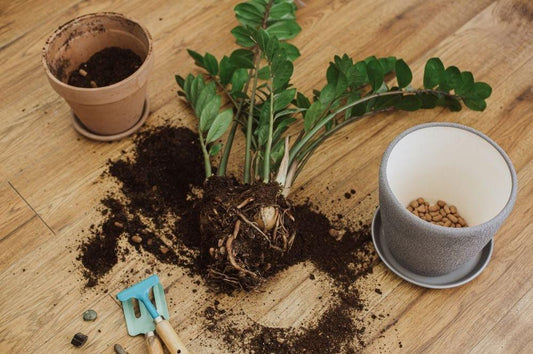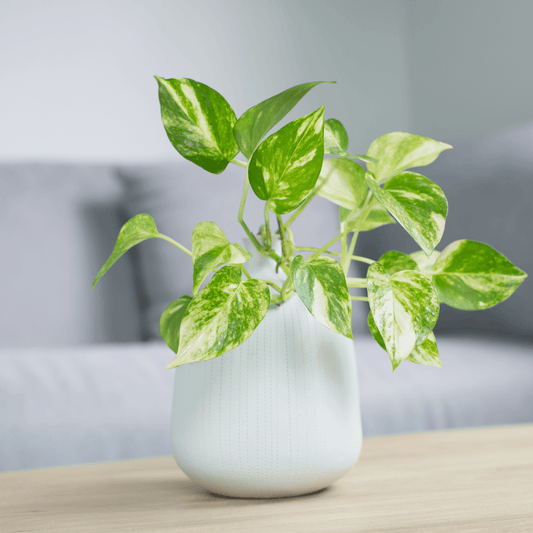Cultivation, care and curiosity
Visit the violaplants.com shop and buy your Oxalis now !
Introduction
Oxalis Triangularis, also known as False Clover or Purple Butterfly Plant, is a stunning plant that can add a touch of color and elegance to any space. In this article, we will explore everything there is to know about this fascinating plant. , from its origins and cultivation conditions to the care needed to keep it healthy and lush.

If you like this plant you can find it for sale in my shop , buy it now !
General description
Botanical Name: Oxalis triangularis
Popular Name: False Clover, Purple Butterfly Plant, Oxalis Wood Sorrel, Butterfly Clover
Family: Oxalidaceae
Climate: Subtropical
Countries of Origin: South America
Ease of Growth: For beginners and intermediate green thumbs
Characteristics of the plant
Oxalis Triangularis is a rustic rhizomatous plant , known for its trifoliate leaves of an intense purple color. Native to South America, this plant can be grown both indoors and outdoors, adapting to various climatic conditions.
Origins and original habitat
Oxalis Triangularis is native to South America , where it grows in subtropical environments. In nature, it can be found mainly in Brazil , in regions with a humid and moderately warm climate. This plant is accustomed to living under the cover of taller vegetation, receiving indirect light filtered through the leaves of the trees. The natural environment of Oxalis Triangularis is characterized by well-draining, moist soils rich in organic matter , which allow the rhizomes to thrive.
Purple Color: Natural or Man-Made Species?
Oxalis Triangularis is a naturally occurring species and its characteristic purple color is not the result of genetic manipulation in a laboratory. The deep purple leaves are one of the distinctive characteristics of the plant, and this coloration is due to the presence of anthocyanins, natural pigments that protect the plant from damage caused by intense sunlight. This attractive coloration is one of the reasons why Oxalis Triangularis is highly appreciated by both gardening enthusiasts and professionals in the sector.
The nyctinasty of Oxalis Triangularis

Ideal temperature
The ideal temperature for Oxalis Triangularis varies between 15-25°C, which allows the plant to maintain continuous vegetation. However, it can withstand lower temperatures, even slightly below zero. During the cold months, the plant may lose its leaves, but the rhizomes remain alive in the soil and the vegetation reappears with the arrival of spring.
Light and positioning
Oxalis Triangularis thrives in bright indirect light . It is important to avoid direct sunlight to prevent leaf scorch. The ideal location is near east or west facing windows where it can receive filtered light.
Watering
This plant requires moderate watering . It is essential to let the soil dry slightly between waterings to avoid water stagnation, which could cause root rot. Oxalis is not particularly demanding in terms of humidity, tolerating the home environment well.
Soil and pot
Oxalis Triangularis prefers well-draining, light and airy soil, similar to that used for houseplants. It is advisable to use a pot with drainage holes, preferably plastic or terracotta, to ensure good water flow and prevent stagnation.
Fertilization
During the growing season , which runs from spring to summer, Oxalis Triangularis benefits from regular fertilization. It is recommended to use a balanced liquid fertilizer every four weeks to ensure a constant supply of nutrients.
Other characteristics and growing tips
Oxalis Triangularis can be grown both in pots and in the open ground. Outdoors, it is important to protect the pots from intense frost and, if planted in the open ground, mulch to protect the rhizomes and roots from the cold.
Conclusion
If you want to add a touch of color and liveliness to your home, Oxalis Triangularis is the ideal choice. Its purple leaves and ease of cultivation make it perfect for both beginners and experienced gardeners. Its leaves are colorful but at the same time elegant and its lilac flowers are a real love for the eyes!
Buy your Oxalis Triangularis Viola at violaplants.com and discover other extraordinary plants.
Don't forget to explore our blog and follow us on Instagram for more tips and inspiration!
Keywords: Oxalis, Oxalis Triangularis, subtropical plants, tropical plants, houseplants, indoor plants, outdoor plants









